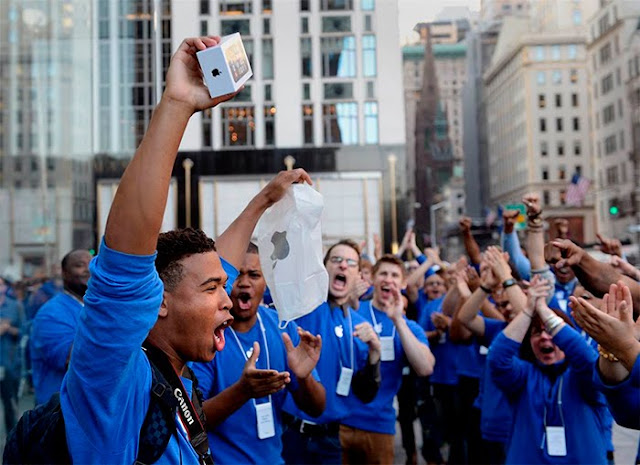It is quite likely that the dream of many brands is to cross the border and become material that goes a step further, that is, to become brands that consumers feel more than just appreciation. Not a few brands would want to become cult brands, those with a large fan base and, above all, see how those consumers themselves are advocates, propagators and supports for the brand. The followers of one of these brands are loyal to it and, besides, they are enthusiasts who not only always buy their products but also function as a kind of evangelists of the same.
Just think about the Apple case. The company is, for a percentage of consumers, one of those brands of worship, which makes them maintain a very special relationship with it. These consumers are queues in their stores, those who buy their products every time they make a modification (no matter how minimal that non-Apple fans think) and who defend it against any attack.
The path to becoming a cult brand is not easy nor is it something that can be artificially created. There is no advertising campaign that makes the brand change status from one day to the next: you have to work steadily and you have to assume that the process will be done little by little. It is not something that happens immediately, but must be integrated into a medium- and even long-term strategy.
As they point out in an analysis on the subject, the path to becoming a cult brand goes through the organic. Status can not be forced and has to be achieved naturally. To that must be added that certain elements are decisive to cross that border and to enter that group: those who have achieved it are usually original and different and also are usually marks that are not afraid to do things different from those made by their rivals .
Having a solid history and a track record does not imply, however, life insurance for brands that have entered the category of cult brands. They are also affected by changes in society and by the fashions and demands of consumers, which means that if they are to be kept as such they have to be able to move to the rhythm of the times.
Abercrombie & Fitch, for example, was a cult brand a few years ago, having now fallen into the darkness of brands with problems as to how their brand image has not been able to change according to the times. Therefore, these brands and the companies that are behind them should not only be able to use their history but also adapt and adjust to the new times. They have to be building a legacy at all times.
Storytelling and experiences
In general, and analyzing everything that they do and everything that defends these marks, it is possible to add another reality that they have in common all those that have become elements of cult. These brands are often able to establish a solid history and to narrate it well. It is not only that they have created a brand narrative, but they are also capable of transmitting it in a positive and convincing way. They are teachers of storytelling.
And just as they know how to tell stories, they have also known the importance of experiences. Cult brands are usually not simply associated with a product or the idea of making it, but in reality the consumer usually associates it all with an experience. You do not buy that product, you live that product and even create a certain lifestyle around it.
Some analysts consider, for example, Ikea a mark of worship. Part of what marks its success is that its production is closely linked to the lives of consumers: it does not market studies, but goes into the home of its consumers, analyze what they need and makes those furniture to alleviate those problems.
All this has a concentric effect, making for their consumers their homes are ‘Ikea houses’. Or, to put another example, Moleskine notebooks are not only an easily identifiable product, but they have also become a sign of identity. It’s what creative people use and almost being creative happens to have a Moleskine full of notes.

